No matter how much anyone wants to hear about it, I’m not going to discuss the night in Bill Dunlap’s Memphis studio when we started shooting at a panoramic photocollage of Mississippi hogs with a blowgun presented to Bill by Jim Dickey. Neither am I going to explain how we matriculated from a fried shrimp dive to a barbecue emporium and thence to the roof of a tall and gutted building where we were more vulnerable to both vertigo and the pelting rain than we had been on the neon-reflecting streets below, because if such a narrative is to unfold someday, it should be conveyed with troubling juxtapositions, high and low wit and rattling implications on rag paper or canvas with oils and the other materials that have served Mississippi’s grand chronicler, raconteur and art crusader Br’er Dunlap so well over the last five decades.
Bill was born in Houston, Mississippi in 1944, and so far as I can tell, he’s been reborn every day since. As he puts it, “I generally wake up of a morning thinking myself a painter and spend the balance of the day in my studio trying to prove it.” He’s been conjuring and executing his work in his native Mississippi, North Carolina, Tennessee, northern Virginia and Florida at a blistering pace ever since, and I’ve succumbed to the evidence so long ago that anyone currently seeking an objective or restrained perspective on this matter need read no further.
Bill’s southern roots have provided his primary subject, though he’s branched out, as the samples we offer suggest, to blend the local and the global, the historical and the personal, the ironic and the romantic. If, as William Faulkner said, the past is not past, then the dead are not dead and the future is not only before us but with us. All of which I believe, else “grits ain’t groceries, eggs ain’t poultry and the Mona Lisa is a man,” as Titus Turner wrote it, Little Milton sang it and Bill would surely know it. In Dunlap’s paintings his own ancestors, Rembrandt, long-buried dogs, collapsed barns, fence lines, wild flora and fauna and a host of iconic artifacts take on a new life and speak to us. I don’t mean just me. His work has appeared in Harper’s, Esquire, Ontario Review, Vanity Fair, The Washington Post, arty magazines, dozens of museums, universities and galleries and on covers of Shenandoah when it was a print journal. Why? Because it is beautiful, witty, accessible, hungry, curious, ironic, beguiling, surprising and a little bit twisted. Because he summons so many beloved images, then subverts and scrambles them with counter-images and says Behold in a manner that delights and threatens at the same time. “Hypothetical realism” he calls it in his high-octane honeyed bourbon voice. Inviting viewers to enjoy — as well as watch, wait, listen and think — he boldly approaches the comforting lure of nostalgia but swerves, winks and reminds viewers of the snelled hooks such delicious lures conceal. His beautiful Mississippi of the past, the old Shenandoah Valley and high farms of the Blue Ridge are all at once spellbinding and imbued with an awareness Flannery O’Connor expresses in Wise Blood:
Where you come from is gone; where you thought you were
going to never was there, and where you are is no good unless
you can get away from it.
 But he also knows that the opposite is most likely equally true. And yet, he joyfully engages with both change and the resistance to it and is, in addition to being a disciplined and rigorous artist, an activist, archivist and grand panjandrum mischiefist who both celebrates and subverts the ceremonies and failures of his region, his country and his species (not limited to his fellow expatriates from the planet Mississippi). He can be found on panels, TV shows, openings, installations, classrooms, pig pickings and turkey shoots pushing art, praising art, interrogating art, all with a generosity of spirit Julia Reed calls “benevolent meddling.” His tactics are, of course, representation, but also reflection, refraction and deflection, all manner of distortion and a brand of yarning that is, for all its magpie gatheration, still pretty distinctly his own. His motifs include Dutch Renaissance portraits, battlefields, wild animals (living and dead), arrows, farmsteads with fences, hounds (sad, sly, soulful or scolded), fish (as in “my mother is a”), water (coming, going or staying), delectable irises and other flora, vast landscapes and skyscapes — all charged and charmed by context and ingenious rendering. And colors? His purples are from Tyre, his blues from Robert Johnson, his yellows from Kashmiri saffron, and his browns, roans, buffs and ochers are out of the rich and riddling earth, his reds aortal and pomegranate and barnfire. And for all the beauty of his palette, he is threatening. Things and places (he is a priest of place) are vulnerable and under dangerous scrutiny, and we love them at our peril. Relics of the dead and sites of slaughter appear in juxtaposition to the most lulling viewsheds, and images of St. Sebastian and skulls crop up at the most inconvenient times. Ghosts wander about and beckon, but they do not simply disperse when we try to reason with them. Reversing the Hamlet practice, they interrogate us. As the male lamented Barry Hannah (whose grave Bill recently took me to, for reflection. . . but that’s another story) wrote, “Dunlap . . . put the hard-edge to the spooky and ineffable.”
But he also knows that the opposite is most likely equally true. And yet, he joyfully engages with both change and the resistance to it and is, in addition to being a disciplined and rigorous artist, an activist, archivist and grand panjandrum mischiefist who both celebrates and subverts the ceremonies and failures of his region, his country and his species (not limited to his fellow expatriates from the planet Mississippi). He can be found on panels, TV shows, openings, installations, classrooms, pig pickings and turkey shoots pushing art, praising art, interrogating art, all with a generosity of spirit Julia Reed calls “benevolent meddling.” His tactics are, of course, representation, but also reflection, refraction and deflection, all manner of distortion and a brand of yarning that is, for all its magpie gatheration, still pretty distinctly his own. His motifs include Dutch Renaissance portraits, battlefields, wild animals (living and dead), arrows, farmsteads with fences, hounds (sad, sly, soulful or scolded), fish (as in “my mother is a”), water (coming, going or staying), delectable irises and other flora, vast landscapes and skyscapes — all charged and charmed by context and ingenious rendering. And colors? His purples are from Tyre, his blues from Robert Johnson, his yellows from Kashmiri saffron, and his browns, roans, buffs and ochers are out of the rich and riddling earth, his reds aortal and pomegranate and barnfire. And for all the beauty of his palette, he is threatening. Things and places (he is a priest of place) are vulnerable and under dangerous scrutiny, and we love them at our peril. Relics of the dead and sites of slaughter appear in juxtaposition to the most lulling viewsheds, and images of St. Sebastian and skulls crop up at the most inconvenient times. Ghosts wander about and beckon, but they do not simply disperse when we try to reason with them. Reversing the Hamlet practice, they interrogate us. As the male lamented Barry Hannah (whose grave Bill recently took me to, for reflection. . . but that’s another story) wrote, “Dunlap . . . put the hard-edge to the spooky and ineffable.”
And his canvases are big, and bigger. There’s an old back-yonder Delta tale about a marvelous, much-mourned dog. Seems a prideful countryman named Ratliff had only to step out on the porch holding up a plank the size of the raccoon whose meat he’d like in his kettle and skin he’d like stretched on the wall of his shed. Ratliff’s faithful hound Boo would take one look at the displayed plank and rush off, returning directly with a coon to fit the order. Unfortunately, one day Mr. Ratliff (or maybe it was Snopes or Gupton) had occasion to remove a broken door from its hinges, and he hauled it out onto the porch, where he was observed by a somewhat abashed Boo. The dog canted his head, sighed, whimpered and loped off toward the woods. Night fell, sun rose, stars again — no dog. Boo was never seen again. Dunlap, however, starts with the door-sized canvas (or paper, which he often paints, drops, smears and scumbles on) and expands from there. At least, that’s how I think he might make this point about scale and, maybe, ambition.
Early on, still hovering near the homeplace, Wild Bill demonstrated that he could offer up his own convincing version of the soul-razoring gaze of a Rembrandt self-portrait, rendering it with creepy accuracy, while interrogating product, process and the Master who produced it by hounding it or locating it at the center of a family reunion. He also painted his own family and environs with both deep fondness and a dead-serious irony, even then asking viewers to consider the cost of what we have and what we must lose in order to keep what we can’t bear to surrender. His 93 ½” long “Three Deer Head for Antietam” from 1982 presents a modern-day view of the battlefield site in winter, the upper two feet of the oil going from purple storm sky to burned butter to the thin rim of mountains, then hills, trees, nestled homes with one lonely martial monument, the whole vast marvel protecting both civilization and the profusion of the glorious from the foreground by only a frail fence, half toppled by the weight of snow. What that foreground, the near hill, reveals are the disembodied heads of a trio of multi-branched mule bucks, their muzzles pointing toward the enticing viewshed, their severed necks showing gruesome meat and cartilage pointed right at the spectator. But you can’t just spectate, because these three sacrificed creatures with their thorny racks say, among other things, “Golgotha” and “suffering” and “cost.” And they ain’t whispering.
In 1984 when he painted one manifestation of his trademark horizontal intoxicating landscape with bristling, Luminist Revival light, stark trees, isolated farmstead in snow, migrating birds in the distance and misbehaving hunting dogs in the foreground, he called it “Agrarian Industrial Complex” and added a nuclear power plant emitting its gorgeous murderous smoke. No wonder the birds are leaving; no wonder three of the four dogs are looking out into the gallery to ask, “What do we do now?” while the fourth dog seeks a place to disappear.
Do now? Bill always seems to know, at least in some provisional way. He knows the bridge to take to the next thing, in various idioms, including conversation. I recollect one night when I was visiting him at his McLean studio, and we had sat up too late for safety naming the beasts of the forest and discussing how Miles Davis’s “Sketches of Spain” altered our auditory and visual imaginations forever. Though I’ve been a jackleg drummer off and on throughout my love affair with music, Bill was once the percussionist for Bill Whitsett’s Imperial Show Band and earned actual federal money at it. Seeing my experience, through no fault of his, as decidedly small change, I changed lanes and mentioned that I had some fine tomatoes in my garden, to which he replied that we should go to bed before the sun caught us, and we could greet the day joyously over some cathead biscuits and tomato gravy conjured from Mama Dunlap’s finest breakfast recipe. He was right about the need to sleep, and right about the biscuits slathered in gravy the hue of rosy-fingered dawn.
 But sleep doesn’t seem to be one of his highest priorities, as Bill appears to be on the road or in the studio more hours per day than Timex puts on watches. It’s hard, looking at the proliferation of his oeuvre, not to think of the 18th century portraitist and polymath William Dunlap, who knew everything about the conventions of theater and not a little about paint. Though Willie Boy is more influenced by Church, Heade, Hopper, W. Homer, Rauschenberg, Wyeth and a heap of others than by the earlier Wm. (Roy Blount, Jr. says he “is to dog-trot what Cezanne was to the orange”), he knows as well as that long-gone W.D. that art is an event and life, as they used to say down at the Hollow Log Lounge, is an emergency.
But sleep doesn’t seem to be one of his highest priorities, as Bill appears to be on the road or in the studio more hours per day than Timex puts on watches. It’s hard, looking at the proliferation of his oeuvre, not to think of the 18th century portraitist and polymath William Dunlap, who knew everything about the conventions of theater and not a little about paint. Though Willie Boy is more influenced by Church, Heade, Hopper, W. Homer, Rauschenberg, Wyeth and a heap of others than by the earlier Wm. (Roy Blount, Jr. says he “is to dog-trot what Cezanne was to the orange”), he knows as well as that long-gone W.D. that art is an event and life, as they used to say down at the Hollow Log Lounge, is an emergency.
An observer and commentator equally at home with Have Mercy in Darlington, S.C. and having coffee with maestro Gore Vidal on his piazza in Ravello, Dunlap is indeed “regional,” but not in the sense of gossip or local wines that won’t travel, so much as in the sense of Islay scotch or scripture that are so specific as to be essential and must be allowed to stray where they may and will find advocates wherever they arrive and pause. Although a few titles of his paintings won’t make you cock your ears or raise your hackles — say “Objects Found and Fashioned,” “Landscape and Variable,” “Birds of a Feather,” “Mississippi Painting” — others say “enter at your own risk”: “Vitruvian Bear,” “Three Deer Head for Antietam,” “Rose Red Root Rut Run,” “He’ll Set Your Fields Afire,” “Delta Dog Trot, Landscape Askew”; “Rembrandt and Spook, Narcissus Reflects on the Starnes House as Audubon’s Osprey Flies Away.” How can anybody resist thinking, “I’d like to have a chance to look at those”?
ONE DAY THE mailman brought me a cardboard tube of the sort posters are shipped in, but I could hear something rattling inside as I tipped it, and the return address let me know it would be some sort of art. Inside, I found a hand-made arrow — fletched, nocked, paint-banded and chert-tipped with a hide strip lashing the point. “What on earth?” Today I might think some terrorist had turned strange, but then I just thought: “We’ll see.” The next paintings I saw by Bill featured various versions of an arrow-riddled corpse. Some would think of the body Costner/Dunbar and his mule driver in “Dances with Wolves” find on the prairie, as the teamster says somebody back home’s wondering, “Why don’t he write?” Others will envision Saint Sebastian, and a few (I wasn’t one yet) might say something akin to, “Aha, Sergeant Wylliams, a photo-documented casualty of manifest destiny’s miscalculations.” Bill means “all of the above,” and some version of that sad human pincushion appears in works like “Willing Spirit, Weak Flesh,” “Meditations on the Origins of Agriculture in America,” “Deer Hide Willow Seek,” “Indian Paint Brush” and others. Bill has written that the picture of the dead soldier remains “the most indelible image” for him, and as I perused these paintings and constructions, all the while that little “look out!” voice in my head was saying “and blowgun darts, too.”
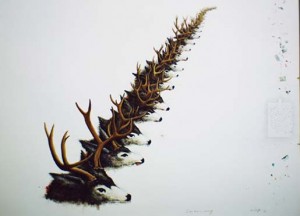 Percussionist and projectile, evangelist (his step-daddy was called) and shill, pilgrim and curator, cadge and fund-raiser — Dunlap believes in full immersion in both illusion and indelible, undeniable fact, and among the great messages in his work are that still life is not nature mort so much as a haunted pause in the wrestling match between refreshment and decay, that the South (with its high theater, low cunning and Christ-hauntedness) is a beautiful, dangerous place to live out the human experiment, that “good hand, good eye” is not enough or beside the point: technique is the mule, not the freight (but it is the mule!). And those dogs who seem to be looking for something (perhaps an earlier cannier race of master/comrades than we have proved to be) won’t let me forget Bill’s humor, which can be deft or sledge-hammer, as he’s not only witty in a traveled, astute and cunning way, but also hunker-down, knee-slap funny, full of puns — visual and verbal — exaggerations, wild associations and the sense that “anachronism” is just another way to say “anything goes.”
Percussionist and projectile, evangelist (his step-daddy was called) and shill, pilgrim and curator, cadge and fund-raiser — Dunlap believes in full immersion in both illusion and indelible, undeniable fact, and among the great messages in his work are that still life is not nature mort so much as a haunted pause in the wrestling match between refreshment and decay, that the South (with its high theater, low cunning and Christ-hauntedness) is a beautiful, dangerous place to live out the human experiment, that “good hand, good eye” is not enough or beside the point: technique is the mule, not the freight (but it is the mule!). And those dogs who seem to be looking for something (perhaps an earlier cannier race of master/comrades than we have proved to be) won’t let me forget Bill’s humor, which can be deft or sledge-hammer, as he’s not only witty in a traveled, astute and cunning way, but also hunker-down, knee-slap funny, full of puns — visual and verbal — exaggerations, wild associations and the sense that “anachronism” is just another way to say “anything goes.”
IN THE NEWER paintings (“Bull Barn Storm” and “What Boys Paint”) that appeared in Shenandoah about four years ago, Dunlap revives and levitates some vintage warplanes to fly over Americana, then conducts both obsolete and state-of-the-art martial paraphernalia, complete with infantrymen, in a symphonic conflagration in which more goes on than barnstorming: explosions bloom in demonic shapes, a palm-studded country suffers and anonymous foot soldiers puzzle over gigantic saurian rough beasts slouching across the desert. Are these Iraqi crocs or our own Everglades gators, drafted for some new surge strategy? Maybe it doesn’t matter. In this painting not quite so long as a coffin, we feel shadows of the military cycloramas of Atlanta and Gettysburg (and the Depression mural revival) Dunlap has long admired and studied. This much we know: SOMEBODY is bringing the recent history of western military prowess to bear, with extreme prejudice, on a city and its surround. Spectators get to see the destruction from a protected distance, and the blood is hidden from us, but we know what colors these “boys” paint in, and who supplies the pigment by pints and gouts. Even the birds we have savored in previous Dunlap “productions” (the narrative is often so John-Ford cinematic that the word seems apt) signal that this crucible is, at best, a place to be from. Given the content of the daily news, his imagery here is hardly prophetic, but it is a grande pathetique, bringing some of the horror home, just in case anyone has forgotten the early months when vengeful might seemed to some enthusiasts beautiful in a para-testosteronic way. Those gung-ho’s probably won’t like the ways he’s suggested their Great Adventure is, at best, opera buffo, but from the start “Shock and Awe” is a phrase born to describe a disaster, no matter how much glamour is mustered.
BROTHER DAVE GARDNER observed, upon seeing one of those road construction signs warning BE PREPARED TO STOP: If you wasn’t prepared to stop, dear hearts, you ought not to of started out. So I’m going to have to hit the brakes myself, though readers needn’t. What we offer in our portfolio is but a smattering of the blessed madness, but I want everyone to know that there’s more, much more. You can find it on www.williamdunlap.com
RTS
Reprinted from Vol. 57, No. 2
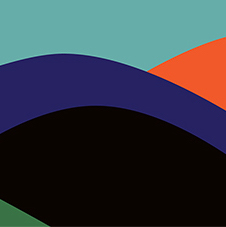
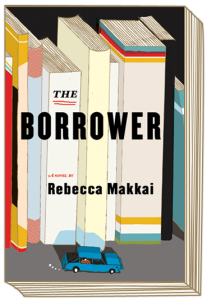

 Washington and Lee has a tremendous literary tradition (I steam every time my husband’s Yale alumni magazine claims Tom Wolfe as a product of New Haven), and I think there’s something magical about the campus and the scenery there that inspires people to write. It was one of the main reasons I chose the school – on my tour, I just got an overwhelming feeling of “this is a place where I could write.”
Washington and Lee has a tremendous literary tradition (I steam every time my husband’s Yale alumni magazine claims Tom Wolfe as a product of New Haven), and I think there’s something magical about the campus and the scenery there that inspires people to write. It was one of the main reasons I chose the school – on my tour, I just got an overwhelming feeling of “this is a place where I could write.”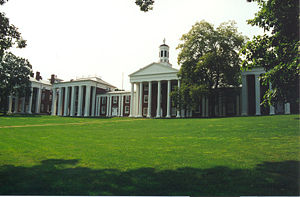
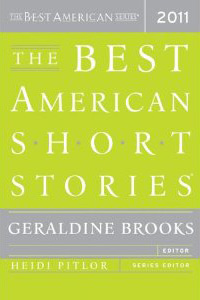
 But he also knows that the opposite is most likely equally true. And yet, he joyfully engages with both change and the resistance to it and is, in addition to being a disciplined and rigorous artist, an activist, archivist and grand panjandrum mischiefist who both celebrates and subverts the ceremonies and failures of his region, his country and his species (not limited to his fellow expatriates from the planet Mississippi). He can be found on panels, TV shows, openings, installations, classrooms, pig pickings and turkey shoots pushing art, praising art, interrogating art, all with a generosity of spirit Julia Reed calls “benevolent meddling.” His tactics are, of course, representation, but also reflection, refraction and deflection, all manner of distortion and a brand of yarning that is, for all its magpie gatheration, still pretty distinctly his own. His motifs include Dutch Renaissance portraits, battlefields, wild animals (living and dead), arrows, farmsteads with fences, hounds (sad, sly, soulful or scolded), fish (as in “my mother is a”), water (coming, going or staying), delectable irises and other flora, vast landscapes and skyscapes — all charged and charmed by context and ingenious rendering. And colors? His purples are from Tyre, his blues from Robert Johnson, his yellows from Kashmiri saffron, and his browns, roans, buffs and ochers are out of the rich and riddling earth, his reds aortal and pomegranate and barnfire. And for all the beauty of his palette, he is threatening. Things and places (he is a priest of place) are vulnerable and under dangerous scrutiny, and we love them at our peril. Relics of the dead and sites of slaughter appear in juxtaposition to the most lulling viewsheds, and images of St. Sebastian and skulls crop up at the most inconvenient times. Ghosts wander about and beckon, but they do not simply disperse when we try to reason with them. Reversing the Hamlet practice, they interrogate us. As the male lamented Barry Hannah (whose grave Bill recently took me to, for reflection. . . but that’s another story) wrote, “Dunlap . . . put the hard-edge to the spooky and ineffable.”
But he also knows that the opposite is most likely equally true. And yet, he joyfully engages with both change and the resistance to it and is, in addition to being a disciplined and rigorous artist, an activist, archivist and grand panjandrum mischiefist who both celebrates and subverts the ceremonies and failures of his region, his country and his species (not limited to his fellow expatriates from the planet Mississippi). He can be found on panels, TV shows, openings, installations, classrooms, pig pickings and turkey shoots pushing art, praising art, interrogating art, all with a generosity of spirit Julia Reed calls “benevolent meddling.” His tactics are, of course, representation, but also reflection, refraction and deflection, all manner of distortion and a brand of yarning that is, for all its magpie gatheration, still pretty distinctly his own. His motifs include Dutch Renaissance portraits, battlefields, wild animals (living and dead), arrows, farmsteads with fences, hounds (sad, sly, soulful or scolded), fish (as in “my mother is a”), water (coming, going or staying), delectable irises and other flora, vast landscapes and skyscapes — all charged and charmed by context and ingenious rendering. And colors? His purples are from Tyre, his blues from Robert Johnson, his yellows from Kashmiri saffron, and his browns, roans, buffs and ochers are out of the rich and riddling earth, his reds aortal and pomegranate and barnfire. And for all the beauty of his palette, he is threatening. Things and places (he is a priest of place) are vulnerable and under dangerous scrutiny, and we love them at our peril. Relics of the dead and sites of slaughter appear in juxtaposition to the most lulling viewsheds, and images of St. Sebastian and skulls crop up at the most inconvenient times. Ghosts wander about and beckon, but they do not simply disperse when we try to reason with them. Reversing the Hamlet practice, they interrogate us. As the male lamented Barry Hannah (whose grave Bill recently took me to, for reflection. . . but that’s another story) wrote, “Dunlap . . . put the hard-edge to the spooky and ineffable.”
 Percussionist and projectile, evangelist (his step-daddy was called) and shill, pilgrim and curator, cadge and fund-raiser — Dunlap believes in full immersion in both illusion and indelible, undeniable fact, and among the great messages in his work are that still life is not nature mort so much as a haunted pause in the wrestling match between refreshment and decay, that the South (with its high theater, low cunning and Christ-hauntedness) is a beautiful, dangerous place to live out the human experiment, that “good hand, good eye” is not enough or beside the point: technique is the mule, not the freight (but it is the mule!). And those dogs who seem to be looking for something (perhaps an earlier cannier race of master/comrades than we have proved to be) won’t let me forget Bill’s humor, which can be deft or sledge-hammer, as he’s not only witty in a traveled, astute and cunning way, but also hunker-down, knee-slap funny, full of puns — visual and verbal — exaggerations, wild associations and the sense that “anachronism” is just another way to say “anything goes.”
Percussionist and projectile, evangelist (his step-daddy was called) and shill, pilgrim and curator, cadge and fund-raiser — Dunlap believes in full immersion in both illusion and indelible, undeniable fact, and among the great messages in his work are that still life is not nature mort so much as a haunted pause in the wrestling match between refreshment and decay, that the South (with its high theater, low cunning and Christ-hauntedness) is a beautiful, dangerous place to live out the human experiment, that “good hand, good eye” is not enough or beside the point: technique is the mule, not the freight (but it is the mule!). And those dogs who seem to be looking for something (perhaps an earlier cannier race of master/comrades than we have proved to be) won’t let me forget Bill’s humor, which can be deft or sledge-hammer, as he’s not only witty in a traveled, astute and cunning way, but also hunker-down, knee-slap funny, full of puns — visual and verbal — exaggerations, wild associations and the sense that “anachronism” is just another way to say “anything goes.”